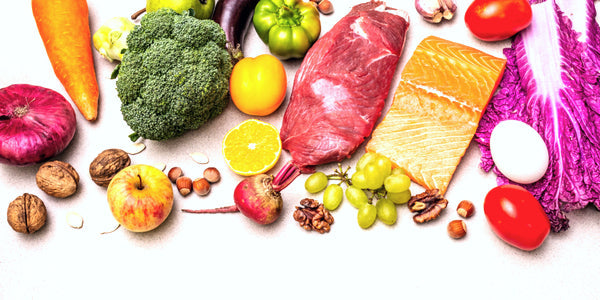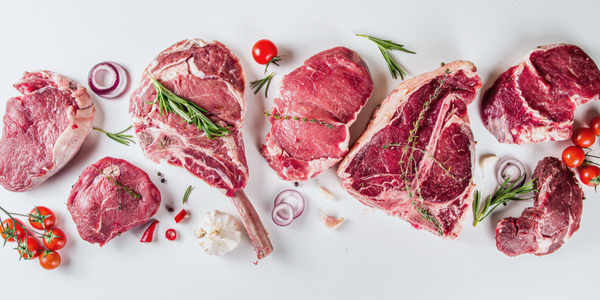
"Eat this not that." "Eliminate X food group." "Only eat in this X hour window."
Diets in themselves can be confusing. Add two diets together, the water may become a bit murkier and the lines unclearer.
But this is exactly what the pegan diet was built on: Combining two popular diets, paleo and vegan specifically, into one eating pattern.
In regards to the paleo diet, lean meat, fish, fruit, veggies, and healthy fats are abundant.
Going vegan is strictly going without all animal proteins and products. This even includes in the forms of honey, gelatin, wool, leather, and other animal by-product ingredients or products.
So, "eating like a caveman" while avoiding meat and other animal products simultaneously? The dietary duo seems like quite the challenge.
So what really is the pegan diet and what foods can you eat? Can it help its followers expect to lose weight or gain other health benefits?
Find out the core components of this newish diet known as pegan.
What Is the Pegan Diet?
The pegan diet is a relatively new eating plan coined by Dr. Mark Hyman in a 2014 blog post.
Dr. Hyman took aspects of he liked about paleo and vegan diets and married them into one eating pattern. Combined, the core characteristics of the pegan diet include:
1. Very low glycemic load, meaning low in sugar, flour, and refined carbohydrates.
2. High in vegetables and fruits with an emphasis on variety. At least 75 percent of plates should feature fruits and veggies, too.
3. Low in pesticides, antibiotics, and hormones, along with no or low GMO foods.
4. No chemicals, additives, preservatives, dyes, MSG, artificial sweeteners and other "Franken Chemicals."
5. Higher in healthy fats, including omega-3 fatty acids.
6. Adequate protein for appetite control and muscle synthesis, especially in the elderly.
7. Ideally, organic, local and fresh foods should be the diet’s majority.
8. Choosing sustainably raised meat or grass-fed meats if animal products are consumed.
9. Choosing fish with low mercury and low-toxin levels.
In addition to these guidelines, there are recommended foods to eat and avoid. Some foods can also be enjoyed on occasion.
Foods to Eat
Encouraged foods on the pegan diet include:
• Plenty of vegetables, in which 2 to 3 veggie dishes per meal is recommended
• Fruits, particularly those considered to be low-glycemic fruits such as berries and avocadoes
• Low-mercury fish such as sardines, herring, and anchovies
• Grass-fed or sustainably raised animal proteins such as beef
• Nuts and seeds
Foods to Avoid
Some foods are discouraged and prohibited on the pegan diet, including:
• Dairy, as "it is for growing calves into cows, not for humans"
• Gluten, most is from Franken Wheat
• Big, starchy beans
• High-mercury fish, including tuna, swordfish, and Chilean sea bass
• Most vegetable oils such as canola, sunflower, corn, and especially soybean oils
Foods to Eat Sparingly
The pegan diet does offer a touch more flexibility compared to more rigid meal plans, including paleo and vegan diets.
There are foods that can be enjoyed in small amounts, including:
• A "treat"
• Gluten-free whole grains, specifically if not gluten sensitive
• Organic goat or sheep products
• Beans, especially lentils
Taken together, the pegan diet emphasizes whole foods, especially vegetables centered at the main course. Meat should be treated more like a side dish and condiment rather than the main course.
Benefits and Drawbacks of the Pegan Diet
Following the pegan diet may lead to a number of health benefits, including weight loss and tighter glycemic control. Followers may lower their risk of chronic disease, too.
However, it is important to weigh the potential drawbacks of following the pegan diet. Nutrient deficiencies, cost, and lasting compliance are a few cons worth noting.
Benefits of the Pegan Diet
People often turn to the pegan diet for weight loss and shedding off pounds can occur, amongst other benefits.
While there is no sound research that supports the pegan diet for weight loss, focusing on wholesome, unprocessed foods can naturally help dieters lose weight. Protein is important for weight loss, too, and the diet promotes adequate protein.
The pegan diet focuses on the glycemic load as well. Whereas the glycemic index measures how single carb-containing foods impact blood sugar, the glycemic load combines both the quantity and quality of carbohydrates.
Since most meals and snacks combine multiple different foods, it is useful to refer to the glycemic load with combination foods since most meals and snacks combine different food groups. Regardless, a low-glycemic diet can help control blood sugar.
Altogether, the intake of more plant-based foods may lower inflammation in the body and the risks of certain chronic diseases. These include, but are not limited to, heart disease and type 2 diabetes.
Drawbacks of the Pegan Diet
On the flip side of the coin, following a pegan diet can be restrictive and costly. And not to mention, short-lived.
The diet calls to restrict large food groups, including most grains, legumes, and dairy products. Yes, some populations majorly rely on and benefit from excluding them, including those living with a wheat allergy, celiac disease, and lactose intolerance.
However, there is no overall consensus the general public should eliminate these food groups. Besides, dairy is rich in calcium and grains in fiber, B vitamins, and other vital nutrients. Cutting out food groups increases the risk of nutrient deficiencies and future health concerns.
While certain foods are not demanded, regularly purchasing organic, grass-fed beef, etc. can lead to steeper grocery bills. Oats, rice, beans, and other off-limited foods are also cost-friendly pantry staples.
Despite its general leniency, there are still restrictions one must consider when following the pegan diet. These can become socially stressful and even lead to a dead-end diet.
Final Thoughts of the Pegan Diet
The pegan diet stresses less on calories and focuses more on eating high-quality foods. The eating pattern encourages consuming mostly plants and healthy fat sources, which can lead to many health benefits.
However, this is the case with any eating pattern that lowers the intake of processed foods lacking nutritional value and focuses on those rich in nutrients. Also to acquire long-term benefits, any sort of diet must likewise be sustained long-term.
As a whole, dieters should follow an eating pattern that works best for their personal goals, lifestyle, and budget.






